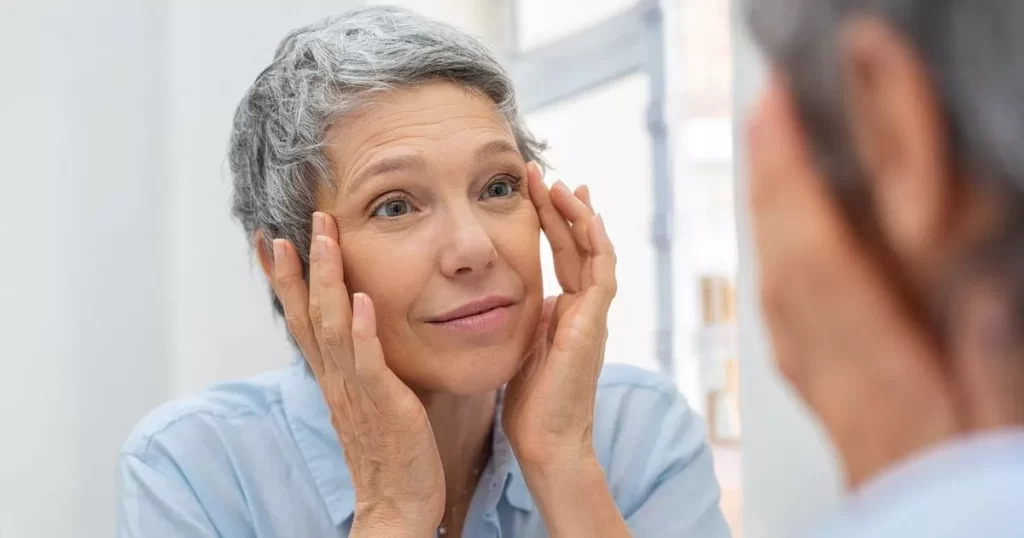Hair gradually starts to lose its colour from the age of 35 (Image: Getty)Join the Club! Get all the gossip on fashion and beauty and never miss out on top stories againMore Newsletters SubscribePlease enter a valid emailSomething went wrong, please try again later.More NewslettersWe use your sign-up to provide content in ways you’ve consented to and improve our understanding of you. This may include adverts from us and third parties based on our knowledge of you. More infoThank you for subscribing!We have more newslettersShow me See OurPrivacy Notice See OurPrivacy Notice×Group 28 Join the Club! Get all the gossip on fashion and beauty and never miss out on top stories againInvalid emailSomething went wrong, please try again later.Sign UpNo thanks, closeWe use your sign-up to provide content in ways you’ve consented to and improve our understanding of you. This may include adverts from us and third parties based on our knowledge of you. More info×Group 28Thank you for subscribing!We have more newslettersShow MeNo thanks, closeSee our
Privacy NoticeFinding a silver strand is just another unwelcome reminder that we are ageing – but scientists have claimed that ‘going grey’ could be a thing of the past. This comes as a recent study has identified the key to keeping your colour, which paves the way for new treatments that could prevent ageing locks. For most people, hair gradually starts to lose its colour from the age of 35 – but this can occur earlier in some cases. According to MedlinePlus, hair colour is due to a pigment called melanin which hair follicles – a pore that surrounds the root and strand of a hair – produce. As you age, the follicles make less melanin, and this causes grey hair . There is currently no treatment to prevent this mechanism from happening, with many people using hair dyes to prevent the grey colour showing through. However, one landmark study has found that stem cells vital for maintaining hair colour become “stuck” as people age.
The colour of your hair is due to a pigment called melanin which hair follicles produce
(Image: Getty)
Published in the journal Nature, the researchers tested cells in the skin of mice and also found in humans, known as melanocyte stem cells, or McSCs. They identified that colour is controlled by whether pools of McSCs in follicles get the signal to mature and make protein pigments. As the hair grows, the cells move back and forth as they transit between compartments of the developing hair follicle. But as our hair ages, sheds and re-grows, increasing numbers of McSCs get stuck in the stem cell compartment – known as the hair follicle bulge – which prevents colouring. The study’s lead investigator, Dr Qi Sun, a postdoctoral fellow at NYU Langone Health, explained: “Our study adds to our basic understanding of how melanocyte stem cells work to colour hair. “The newfound mechanisms raise the possibility that the same fixed-positioning of melanocyte stem cells may exist in humans.
A recent study has identified the key to keeping your colour
(Image: Getty)
“If so, it presents a potential pathway for reversing or preventing the greying of human hair by helping jammed cells to move again between developing hair follicle compartments.” Professor Mayumi Ito added: “It is the loss of chameleon-like function in melanocyte stem cells that may be responsible for greying and loss of hair colour. These findings suggest that melanocyte stem cell motility and reversible differentiation are key to keeping hair healthy and coloured.”
Read More
Related Articles
Christine McGuinness shows off impressive gymnastics skills in sports bra
Read More
Related Articles
Stacey Solomon’s morning routine: Watch how mum of five starts her day
Read More
Related Articles
Victoria Beckham shows off muscles in gym but fans are distracted by David in background
Read More
Related Articles
Montana Brown vows to ’embrace’ new body amid pregnancy changes
Read More
Related Articles
Improve your health and fitness routines with these 10 brands
Story SavedYou can find this story in My Bookmarks.Or by navigating to the user icon in the top right.Follow OK! MagazineFacebookTwitterCommentMore OnBeautyHealth












